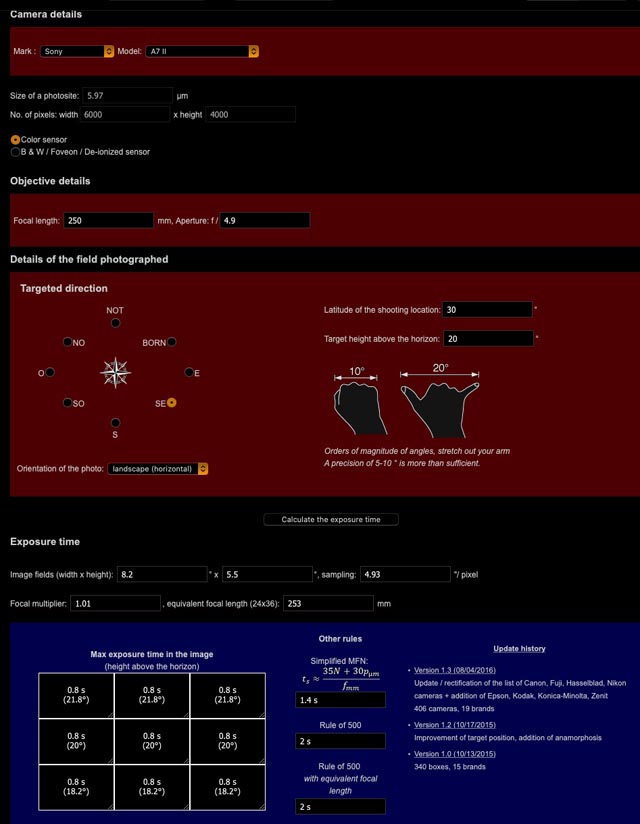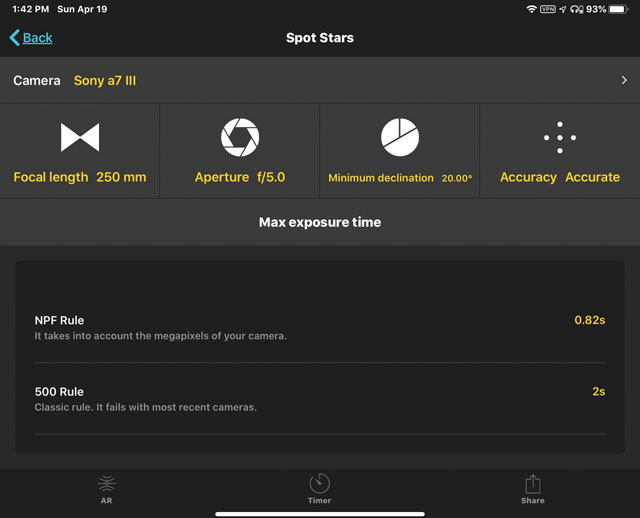- Images
- Blog
- Tools
- Questar
- The Questar telescope
- Questar resource links
- Search for Questar info
- 172mm Focal Reducer
- Afocal adapter for point and shoot camera
- Camera adapter lengths
- Camera adapter threading
- Camera connection
- Camera focusing
- Custom counterweight
- Drift Alignment Joy
- Finder Eyepiece Compatibility
- The Questar Moon 1981
- Questar Powerguide II Battery Life
- Questar Zone, How to Service Videos
- Red Dot finder mount for Questar
- Questar Viewing Table
- Wedge mounts
- White light solar filters comparison
- How to
- Get started in astronomy
- Astro RaspberryPi Camera and kin, the ASIAir and StellarMate
- Blind Smart-phone Equatorial Wedge or GEM Polar Alignment
- Camera phone adapter
- Celestron FirstScope with equatorial tripod mount
- Coat Pocket Astrophotography
- Day-lapse Images of Earthshine on the Crescent Moon
- Dobsonian Carrying Case
- DSO Astrophotography without a Telescope
- DSO imaging without a star tracker
- Estimating image resolution
- Lunar Eclipse Photography
- Moon photography - a dozen ways to shoot the Moon
- Meteor shower photography & planning
- Matching image sensor size to telescope resolution
- Narrow band imaging with color cameras
- Planetary Image Workflow
- Print and Display Astrophotography
- Observing
- Events
- More
- About
- Contact
DSO imaging without a star tracker
Would you like to take close up deep sky images without the bother and expense of a star tracking drive?
A fixed tripod and the rule-of-500 is a great starting point for a new astrophotographer taking short focal length images of the Milky Way, star trails, or night scape images. A star tracking mount for making close up images of deep sky objects with a long lens adds complexity and cost. Some newer cameras have very good low light sensitivity. With many very short exposures and de-rotation stacking of the images it is possible to take astrophotographs of deep sky objects that require longer focal lengths and long total exposure times.
Accurate maximum exposure time
Stacking images requires pin point stars. The rule-of-500 gives a rough estimate of maximum exposure time that works fine for short focal length wide-angle Milky Way shots, but isn't accurate enough for stacking longer focal length images. Calculating an accurate time includes many factors other than your lens focal length. These include the pixel pitch of your sensor and the location of your target in the sky. The math for this can be daunting. Fortunately the hard work has been done and encapsulated in a couple of accessible calculators. These are based on the NPF Rule developed by Frédéric Michaud for the Société Astronomique du Havre. A calculator is available in French at Règle NPF - calcul du temps de pose sans filé d'étoiles. Google translate can render this in english at NPF rule. Note that Google Translate mistranslates the NPF acronym as MFN. NPF stands for aperture, pixel scale, and focal length.
Here is an example of the SAH calculator in action:

A simplified version of the NPF rule is given below where f-stop is the lens f-number (focal_length/appterture_diameter):
max_shutter_time_sec = (35 * f-stop + 30 * pixel_pitch_microns) / focal_length_mm
A more accurate version of the NPF rule requires a bit of trigonometry:
max_shutter_time_sec = (0.1 * focal_length_mm + 16.85 f-stop + 13.71 * pixel_pitch_microns) / (focal_length_mm * cos(target_declination))
In addition to the calculator at the SAH web site, there is one in the very useful PhotoPills app available on the iPhone and some other smart phones. The "Spot Stars" tool in PhotoPills is shown below:

Taking your images
The NPF rule will capture sharp images for stacking, but because the camera mount is fixed, your target will appear to move across your camera field of view. As a result you will need to re-aim your camera between bursts of images to keep your target in view. The target will move 1 degree every four minutes. For example with a 250 mm lens and a full frame camera sensor with the fame oriented with the long dimension in the direction of motion (E-W). The camera FOV will be arc tan (35/250) or almost 8 degrees. If your target is 1 degree across and you place it at the western side of your frame, it will need to travel 7 degrees to reach the eastern edge of the frame. This will take 28 minutes. You should set your intervalometer for an image burst of less than 28 minutes. Reframe your target after each burst and repeat as many times as possible to capture the total exposure time needed for your target. Remember in your intervalometer programing, to allow time between each exposure for the image to write to memory and for any vibration from the shutter or mirror to die down. This will be a second or two. Your actual exposure total exposure time may be less than half your imaging time because of the inefficiency of short exposures. In exchange you avoide the need for a star tracking drive.
Stacking your images
In addition to the target moving across the frame's field of view of your images, it will also rotate in the field of view. You will need to stack your images with an application that compensates for this field rotation.
Nico Carver of NebulaPhotos.com has a video tutorial detailing capturing an image of the Orion Nebula without a tracker on YouTube: Orion Nebula WITHOUT a Star Tracker or Telescope, Start to Finish - Deep Sky DSLR Astrophotography
Content created: 2020-04-19
Comments
![]() Submit comments or questions about this page.
Submit comments or questions about this page.
By submitting a comment, you agree that: it may be included here in whole or part, attributed to you, and its content is subject to the site wide Creative Commons licensing.

How to
Starter telescopes for beginners
Getting started in astrophotography?
Choose & setup a camera for astrophotography
Astro RaspberryPi Camera and kin, the ASIAir and StellarMate
Blind Smart-phone Equatorial Wedge or GEM Polar Alignment
Celestron FirstScope with equatorial tripod mount
Day-lapse Images of Earthshine on the Crescent Moon
DSO Astrophotography without a Telescope
DSO imaging without a star tracker
Overview & equipment for lunar eclipse photography
Framing and tracking a lunar eclipse
Moon photography - a dozen ways to shoot the Moon
Meteor shower photography & planning
Matching image sensor size to telescope resolution
Narrow band imaging with color cameras
Print and Display Astrophotography

 Get started in astronomy
Get started in astronomy